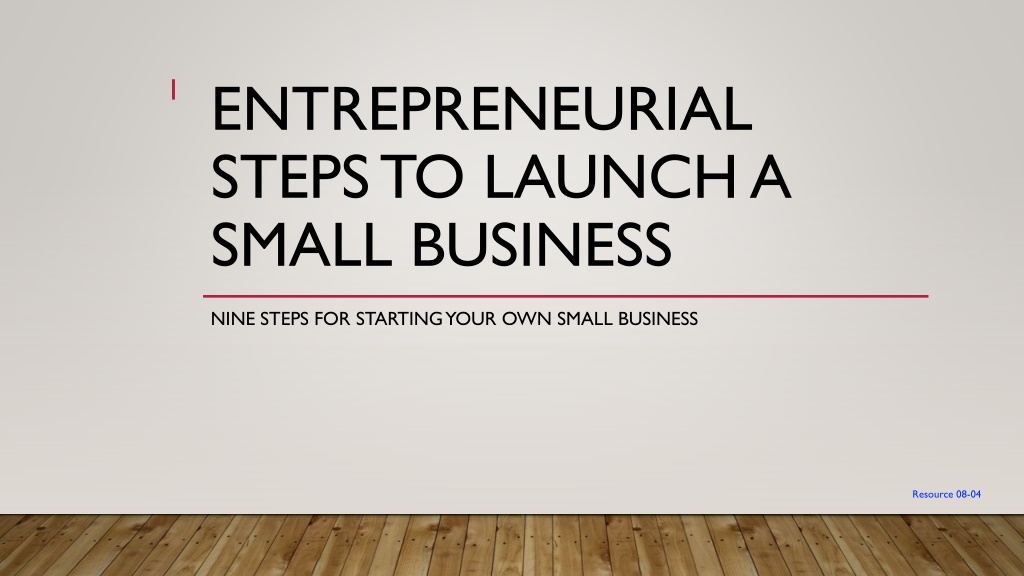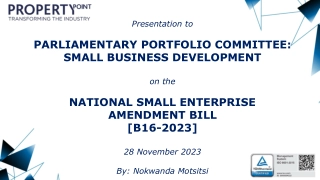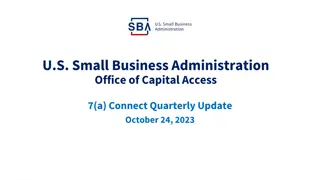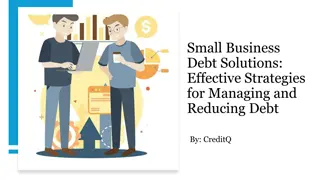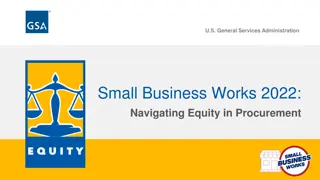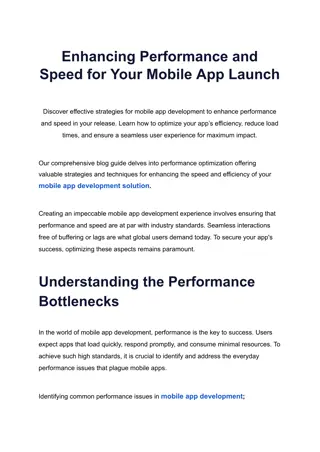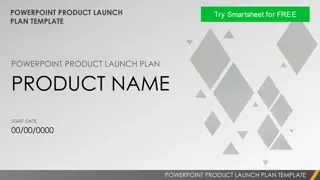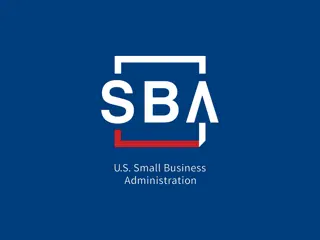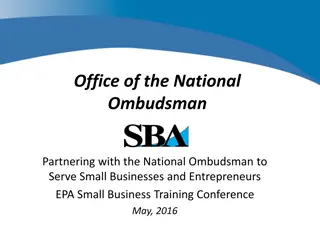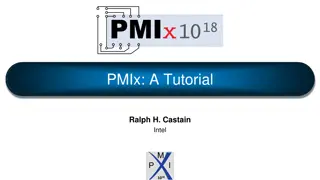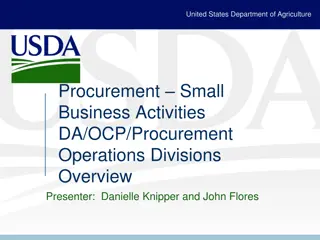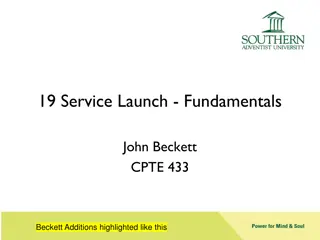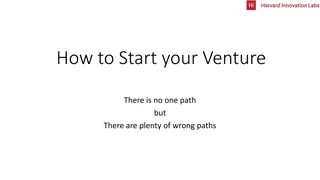Nine Steps to Launch Your Small Business Successfully
Understand the importance of offering a differentiated product/service, identifying your target market precisely, and creating concise financial projections when starting your own small business. Establishing a unique value proposition, defining your customer base, and planning your finances are key steps in the entrepreneurial journey.
Download Presentation

Please find below an Image/Link to download the presentation.
The content on the website is provided AS IS for your information and personal use only. It may not be sold, licensed, or shared on other websites without obtaining consent from the author.If you encounter any issues during the download, it is possible that the publisher has removed the file from their server.
You are allowed to download the files provided on this website for personal or commercial use, subject to the condition that they are used lawfully. All files are the property of their respective owners.
The content on the website is provided AS IS for your information and personal use only. It may not be sold, licensed, or shared on other websites without obtaining consent from the author.
E N D
Presentation Transcript
ENTREPRENEURIAL STEPS TO LAUNCH A SMALL BUSINESS 1 NINE STEPS FOR STARTING YOUR OWN SMALL BUSINESS Resource 08-04
Resource 08-04 STEP 1: DESCRIBE YOUR DIFFERENTIATED OFFERING 2 Differentiated means different from anything else Small businesses that succeed have a reason they succeed, a differentiated offering that attracts customers, generates sales, and serves as the foundation for a successful business Most successful small businesses start and succeed because the entrepreneur is: Driven Propelled by the vision of what he/she believes is the unique contribution his/her business will deliver
Resource 08-04 STEP 1: DIFFERENTIATED OFFERING 3 Low price is hard to defend because your competitor can just lower prices to match your best offer. Best service is easier to defend but hard to consistently deliver and prove to customers. Creating a different style or tone to your business is more defensible, especially if that style or tone is central to your core business idea. Example: outdoor culture at Bass Pro Shops that appeals to hunters and fishermen
Resource 08-04 STEP 1: DIFFERENTIATED OFFERING 4 The best differentiation is something that your product or offering has that is protected by a patent or some other legal protection. Example: exclusive agreement to sell the newest fashion clothing Example: Beanie Babies Only official Hallmark stores were able to sell Beanie Babies.
Resource 08-04 STEP 2: IDENTIFY AND QUANTIFY YOUR TARGET MARKET 5 As you consider your new enterprise, determine who is the EXACT target market you intend to serve. Target markets can be geographic, lifestyle, demographic, and/or cultural. Determine the entire market your business will serve, and the target market you intend to serve with a differentiated offering these customers will find irresistible. Example: You might be willing to cut hair for anyone who comes into your salon, but your passion is serve fashion forward young adults living within two miles who want to constantly experiment with their look.
Resource 08-04 STEP 3: CREATE YOUR ONE-PAGE FINANCIAL PROJECTIONS 6 Create your pro forma A one page financial projection that lists major revenue sources and expenses. Your pro forma should show how you intend to make enough money each month to pay your staff, cover your overhead, and have enough left over to pay any debt interest, taxes, etc. . . . and lastly yourself the owner.
Resource 08-04 STEP 3: CREATE YOUR ONE-PAGE FINANCIAL PROJECTIONS 7 Typical Financial Project pro forma Format Revenues by service or type of customer Don t worry if your first few pro formas indicate that your business can t make a positive monthly margin. The first few proformas of every new business show negative results until you refine and improve your business concept. (number of customers) x (typical purchase) Anticipated monthly revenues for the first two years Expenses by category Cost of goods sold Personnel costs (not including owner compensation) Facility costs Overhead costs Monthly Margin for debt interest, taxes, and owner pay
Resource 08-04 STEP 4: DETERMINE YOU MARKETING AND SELLING STRATEGIES 8 Definition: Marketing How you intend to communicate to large numbers of customers, motivating them to learn more about business. Example: advertising is a marketing tool. Selling How you move specific customers to buy from you.
Resource 08-04 STEP 4: DETERMINE YOUR MARKETING AND SELLING STRATEGIES 9 The characteristics of effective advertising: Memorable/Distinctive The best ads are memorable because of striking images, effective wording, catchy music and/or a memorable catch phrase. Demonstrates Value The best ads (especially for small businesses) move a customer to action by offering a value proposition they find irresistible. Creates an Emotional Bond The best ads appeal to the emotions of your targeted customers, creating a bond between them and you. In the past, advertising meant expensive television advertisements. Today, there are more inexpensive ways to advertise social media, YouTube, videos, Facebook that are less expensive and quicker-to- market.
Resource 08-04 STEP 5: SECURE YOUR FUNDING (AND YOUR MENTORS/ADVISORS) 10 Capital (Equity) Funds contributed by investors to a business. Investors contribute capital to a business because they expect a significant return on their investment when the business succeeds. Credit (Debt) Funds lent to a business and an agreement that the business will repay the lender with interest
Resource 08-04 STEP 5: SECURE YOUR FUNDING (AND YOUR MENTORS/ADVISORS) 11 You will need to assemble enough capital and credit in order to launch and operate your new business. Every new venture finds it challenging to secure the funds necessary to launch and operate. To attract investors, you should develop an elevator speech about your business. Elevator speech a clear, concise, and compelling way you can describe in 30 seconds you differentiating vision to encourage potential investors to learn more.
Resource 08-04 STEP 5: SECURE YOUR FUNDING (AND YOUR MENTORS/ADVISORS) 12 Example elevator speech : I intend to start an auto parts store that can successfully compete against Amazon and national chains. We will focus on young plant and construction professionals in our three- parish region who want to trick out their trucks. We will offer much more than parts we will offer workshops on the best ways to work on trucks and competition to award prizes to the best rucks. We ll create a loyal community of customers who convince their friends and colleagues to buy from us.
Resource 08-04 STEP 5: SECURE YOUR FUNDING (AND YOUR MENTORS/ADVISORS) 13 In most cases, the investors who provide you with funding become your mentors and advisors. They will want your business to succeed. When they invest in your enterprise, get them to meet with you regularly and be available to talk with you at any time so that you have a team of supporters who can help you succeed.
Resource 08-04 STEP 6: DEVELOP YOU LAUNCH PLAN 14 A Launch Plan is a detailed To Do List of steps you ll need to take to go from concept to funding all the way to business launch. The more detailed you make a Launch Plan specific tasks, projected costs, targeted task completion dates and the team member responsible for each step the better you can measure and manage the process it takes you to launch you business. Launch Plan Sample Format Task Costs Completion Date Responsible
Resource 08-04 STEP 7: VISIT THE GEAUXBIZ PORTAL TO REGISTER YOUR BUSINESS 15 The Louisiana Secretary of State makes it easy for entrepreneurs makes it easy for entrepreneurs to start-up a new small business. Go to geauxBIZ web portal (https://geauxbiz.sos.la.gov). This portal will walk you through all the steps necessary to: --register your business name --determine the appropriate legal structure for your business --submit required state and federal government forms --obtain any required permits or licenses
Resource 08-04 STEP 8: SELECT YOUR ACCOUNTING SYSTEM 16 No business should keep handwritten financial records Never. Every business should use Quicken QuickBooks, or some other software to track your expenses. Smart small business people also use software or online programs to budget and track their expenditures, and even create invoices and manage payroll.
Resource 08-04 STEP 9: ARRANGE FOR SOUND INSURANCE PROTECTION 17 Every business needs insurance. Insurance may be expensive for a new small business, but it provides you with the necessary protections to guard against a single unfortunate event closing you business before it even gets started. Contact insurance agencies to discuss the types of insurance you and your new business may need. When you have done this, develop a plan for the insurance policies you will need.
Resource 08-04 STEP 9: ARRANGE FOR SOUND INSURANCE PROTECTION 18 Two important concepts about the cost of insurance: Premium the annual cost to you of your insurance Deductibles the amount you will have to pay before the insurance reimburses you for a loss. The insurance company should provide you with a letter describing the types of costs of coverage you will need. You can show this letter to investors to reassure investors that your enterprise is insurable and that you are prepared to secure necessary insurance protection as soon a you launch your business.
Resource 08-04 STEP 9: ARRANGE FOR SOUND INSURANCE PROTECTION 19 Types of insurance small businesses will need Worker s Compensation: In case employees are injured. This insurance is required by law. General Liability Insurance: Protects against a number of hazards (injured customer). Property Insurance: Protects your building, inventory, and equipment from fire, flood, and/or vandalism. Commercial Vehicle Insurance: Protects your vehicles, your employees while driving any business for the business, and anyone who might be injured in an accident involving your employees and vehicles. Errors and Omission (E & Q) Insurance: Protects a service business from any malpractice errors Key Person Life Insurance: Protects the business and owners families in case the entrepreneur dies.
